Endgame Lessons: Rook & Pawn versus Bishop
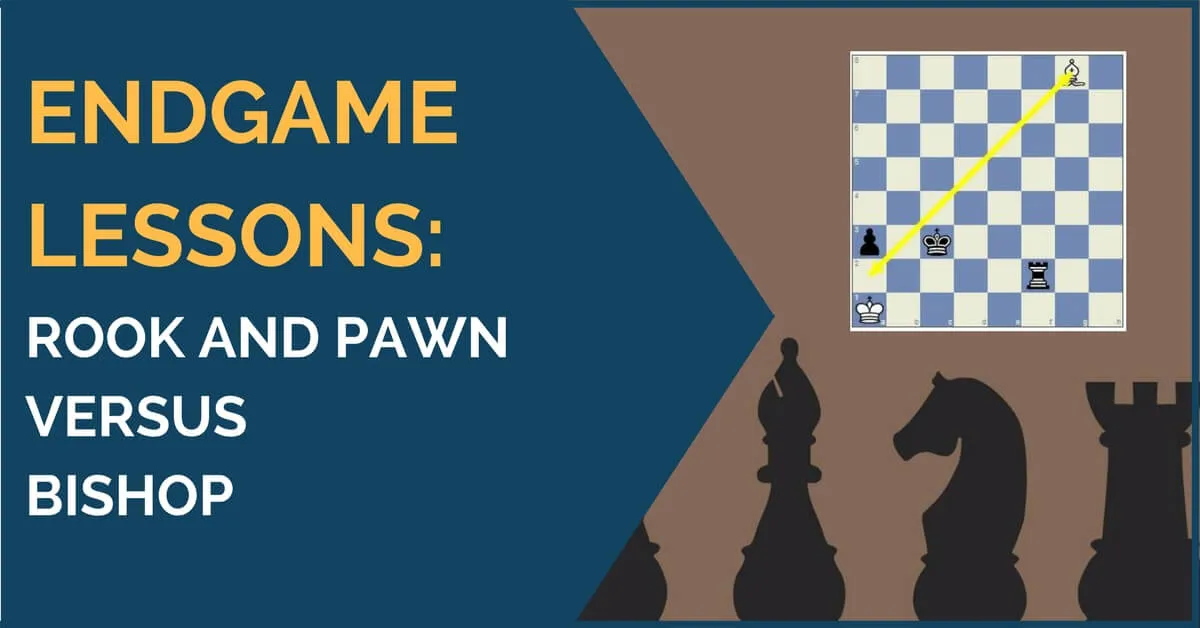
It is always an extremely difficult task learning Endgame Lessons. In my personal career, I have always lacked the motivation and guidance to do so. Most of what I know today I have learned through self-experience after many tournament games and analysis with colleagues. This is far from the ideal way of learning endgames.
Lately, I have been trying to correct this problem and have started studying the endgame phase in more depth. It is first of all very important to know those positions that are theoretical draws but you still need to play accurately in order to achieve it. This is the case of the endgame presented in this article: rook and pawn versus bishop.
It is an endgame that I have played myself in a tournament game and was lucky to make a draw, but only because my opponent misplayed it.
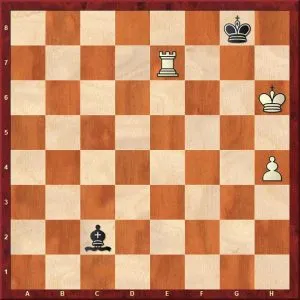
Apparently, the side with the material advantage should win without trouble but it is not so simple when this pawn is on the H-file. Therefore this article is thought to serve as a survival (or converting) guide for all of you who may not know this endgame.
Endgame Lessons: Basic points
Let’s start with some basic points that you should learn and never forget:
- In order to offer some kind of resistance, the defending side must have his king in the corner contrary to the color of his bishop. The defense is based on stalemate and zugzwang.
- The side with the pawn should try to keep his pawn as far as possible. Once this pawn reaches the 5th rank, it is already a draw. This is very important.
- If the pawn is in the 4th rank then it is a certain win.
We’ll start by first explaining the drawing examples:
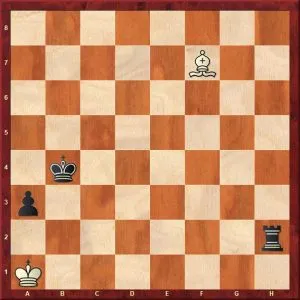
Achieving a draw in this position is not complicated but you must be careful, always.
Hint #1:
In order to make a draw in this position, the weak side must avoid getting in zugzwang by the advance of the pawn to the 2nd rank. Hence he must keep an eye on this advance and maintain the bishop on this diagonal.
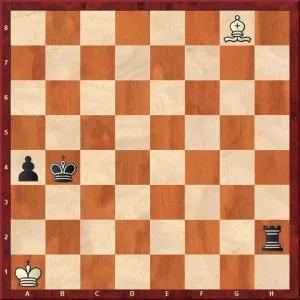
Here we see the black pawn is on the 4th rank. As mentioned before this is also a draw but again, it is a more sensible position than the one with the pawn on the 3rd .
Hint #2:
The bishop must stay on the diagonal of the advancing pawn. Do not leave this diagonal under any circumstance. If you know this rule then you should be able to work out the correct defense by yourself! It’s that important!
At last, let us examine the winning position of this particular endgame. Here it is difficult to point out markers to follow, but if you know the previous two examples well you will realize that with the pawn on the 5th rank the weak side is unable to pull any of the defensive maneuvers.
The following position arose in the game Donner-Barcza, Havana 1967:
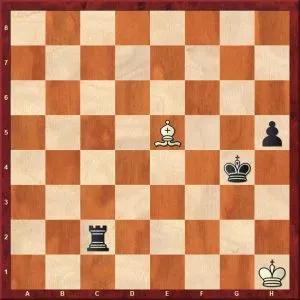
Endgame Lessons: Conclusion
In conclusion, we could say that once you know the core of this endgame it seems easier than when you face it over the board without previous knowledge.
We got two main points:
- If the pawn is on the 5th rank or beyond, it is a draw. The defending side should keep the bishop on the diagonal that intersects the h pawn in both scenarios.
- If the pawn is on the 4th rank or less, it is a winning situation. The side with the material advantage should try to cut the white king away from the pawn.
I hope our readers have enjoyed reading this short but useful article which provides essential knowledge for an endgame that could arise any day.
Ready to start winning games? Check out our store and articles:
- Strategic Endgame Mastery with IM Mat Kolosowski
- Dominate the Endgames Like 13 World Champions for the Tournament Player – Vol. 178 – Part#1
- Endgame Pointers, Positions and Problem Solving – IM David Vigorito
- 5 Tips to Improve Your Rook Endgame Play
- Mastering Endgames in 3 Easy Steps
Good luck!




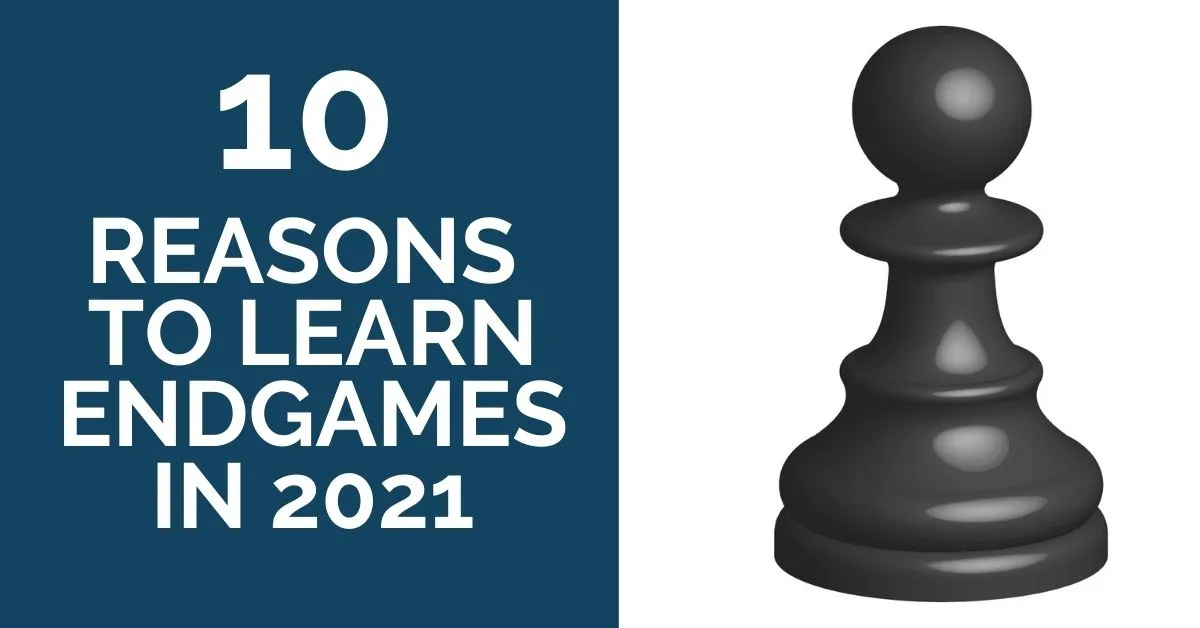
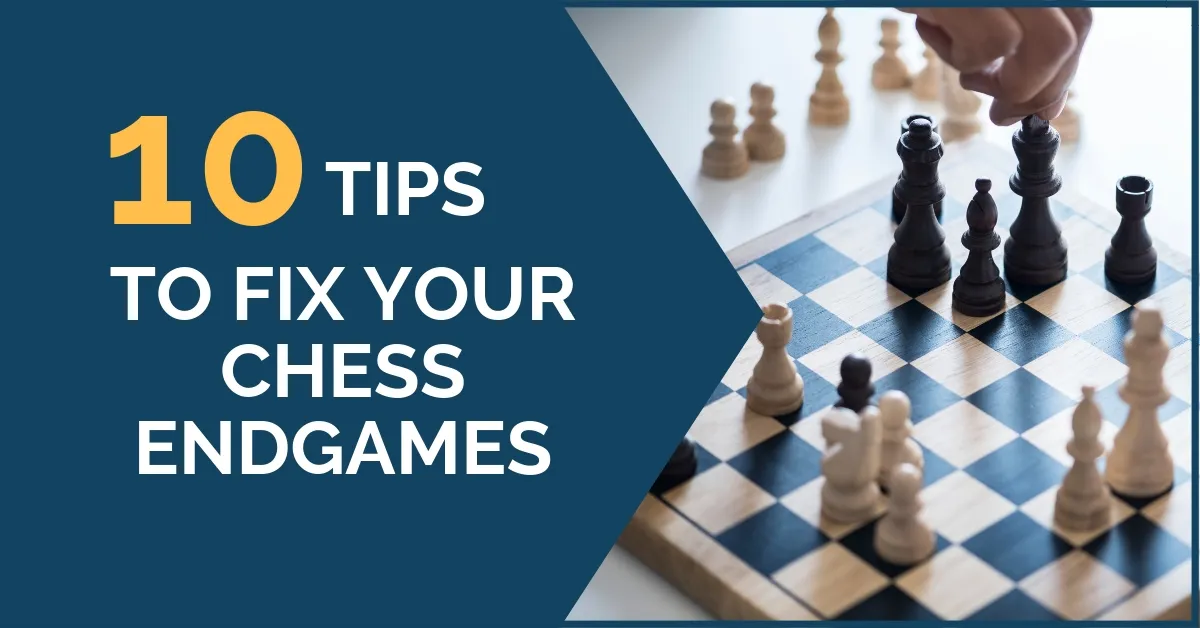




Comments: